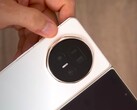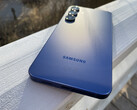Verdict - The 400 Pro is fully equipped
Honor has provided its 400 Pro with a generous feature set. The Pro model comes with features we missed in our review of the standard 400: wireless charging, better IP certification, and a 6 GHz band.
The 400 Pro impresses with a wide range of cameras, ample storage, and high system performance. The manufacturer also offers a six-year update guarantee. The battery life is just as impressive as the charging speed.
What are the differences compared to the flagships? For example, they usually feel even more premium in the hand. The 400 Pro also offers plenty of performance, but lacks the latest processor. Finally, there's still room for improvement regarding the camera system. However, the 400 Pro offers good value for money, especially considering its asking price.
Pros
Cons
Price and availability - The Honor has a good starting price
The Honor 400 Pro's RRP is £699. At the time of testing, applying a voucher on the manufacturer's UK online store ensures the device can be yours for £549. An additional selection of free gifts (valued at £309) is also available. This includes free headphones, a 100-watt power adapter, and an extended 180-day, one-time replacement warranty.
Table of Contents
- Verdict - The 400 Pro is fully equipped
- Specifications
- Case - The 400 Pro is water and dustproof
- Features - The Pro model packs USB 2.0
- Software - Honor promises six-year updates
- Communication and GNSS - The 400 Pro has Wi-Fi 7
- Telephone functions and voice quality - The 400 Pro offers live translations
- Cameras - Honor AI converts images into videos
- Accessories and warranty - The 400 Pro comes with a pre-fitted screen protector
- Input devices and operation - The 400 Pro only has 2D face recognition
- Display - The Honor can hit 5,000 nits
- Performance - The 400 Pro has performance to spare
- Emissions - The Honor 400 Pro throttles in the stress tests
- Battery runtimes - The Honor packs a large battery
- Notebookcheck overall rating - The 400 Pro is a comprehensive package
- Possible alternatives compared
With its numbered series, Honor is offering an alternative to its own flagships. The 400 Pro represents the top model in the series alongside the 400 and 400 Lite.
The 400 Pro is only available in Germany with 512 GB of storage and 12 GB of RAM. It comes in two colors: Lunar Gray and Midnight Black. Our review device is black.
Specifications
Case - The 400 Pro is water and dustproof
The Honor 400 Pro feels good in the hand. The front and back are slightly rounded towards the edges, and the buttons are located on the right side of the case. They possess a good pressure point, but they wobble on the review device.
The frame and rear are matte and resistant to fingerprints. The device is IP69 water and dust resistant. With the application of force, the smartphone can be twisted slightly, which creates a noise. The gaps are very small and even, but we did notice the first scratches on the USB port during the testing period.
Features - The Pro model packs USB 2.0
Honor has omitted expandable storage for its 400 Pro, but at 512 GB, the internal storage is substantial. The device supports dual SIM and eSIM.
Unfortunately, the USB port is only USB 2.0 compatible, but the device supports exFAT and NTFS file systems. When paired with a Samsung PSSD T7, we achieved a transfer speed of 37.6 MB/s.
Software - Honor promises six-year updates
Honor ships the 400 Pro with Android 15 and the MagicOS 9.0 UI. The smartphone will receive six years of security updates and six Android versions. With the 400 series, the manufacturer is relying heavily on AI features. Its software can convert images into videos and act as a translator for videos and calls.
Sustainability
The 400 Pro comes in a small, plastic-free box. The manufacturer hasn't provided information concerning the device's carbon footprint. The large battery capacity and long software support suggest long-term usability.
Communication and GNSS - The 400 Pro has Wi-Fi 7
Honor has equipped the 400 Pro with Wi-Fi 7, which includes the 6 GHz band. When used with our reference router, the Asus ROG Rapture GT-AXE11000, the transfer speeds fluctuated somewhat but remained at a good level.
LTE and 5G reception were also unremarkable in our tests. Dual SIM is possible with two physical SIM cards or one physical SIM and one eSIM. The band coverage can be best described as acceptable.
| Networking | |
| Honor 400 Pro | |
| iperf3 transmit AXE11000 | |
| iperf3 receive AXE11000 | |
| iperf3 transmit AXE11000 6GHz | |
| iperf3 receive AXE11000 6GHz | |
| Google Pixel 9 | |
| iperf3 transmit AXE11000 | |
| iperf3 receive AXE11000 | |
| iperf3 transmit AXE11000 6GHz | |
| iperf3 receive AXE11000 6GHz | |
| Xiaomi Poco F7 Ultra | |
| iperf3 transmit AXE11000 | |
| iperf3 receive AXE11000 | |
| Motorola Edge 60 Pro | |
| iperf3 transmit AXE11000 6GHz | |
| iperf3 receive AXE11000 6GHz | |
| Samsung Galaxy S25+ | |
| iperf3 transmit AXE11000 | |
| iperf3 receive AXE11000 | |
| iperf3 transmit AXE11000 6GHz | |
| iperf3 receive AXE11000 6GHz | |
| Average 802.11 a/b/g/n/ac/ax/be | |
| iperf3 transmit AXE11000 | |
| iperf3 receive AXE11000 | |
| iperf3 transmit AXE11000 6GHz | |
| iperf3 receive AXE11000 6GHz | |
| Average of class Smartphone | |
| iperf3 transmit AXE11000 | |
| iperf3 receive AXE11000 | |
| iperf3 transmit AXE11000 6GHz | |
| iperf3 receive AXE11000 6GHz | |
Telephone functions and voice quality - The 400 Pro offers live translations
Honor relies on its own, no-frills phone app. The only special feature is real-time call translation, for which the corresponding plug-in must be downloaded. Chinese, English, German, French, Spanish, and Italian can be translated.
The voice quality is good, especially when AI noise reduction is active. The earpiece and speaker can get loud. Live translation is practical, but not perfect. Upon request, the call can be transcribed.
Cameras - Honor AI converts images into videos
Honor uses a triple setup for its 400 Pro. The 200 MP main camera is supported by a 50 MP zoom and a 12 MP ultra-wide-angle camera. Overall, the camera performance is impressive. Compared to high-end smartphones, however, it lacks dynamic range and sharpness. Images from the zoom and ultra-wide-angle cameras are usable.
The software can sharpen images upon request, and the AI can perform color adjustments. Overall, many software features are available, such as AI-based image enhancement, which works well. Videos with the main camera are possible at a maximum of 4K and 60 fps.
The 50 MP front camera takes decent selfies. The portrait mode is also impressive. Videos with the front camera are possible at a maximum of 4K and 30 fps. The video quality is good, with two standouts being the stabilization and fast autofocus.
Image comparison
Choose a scene and navigate within the first image. One click changes the position on touchscreens. One click on the zoomed-in image opens the original in a new window. The first image shows the scaled photograph of the test device.
RabbitLakeUltra-wide-angle5x ZoomLow light

Accessories and warranty - The 400 Pro comes with a pre-fitted screen protector
The 400 Pro package includes the device, a SIM card reader, and a USB cable. A screen protector has already been applied to the display. A charger and headphones are included free of charge as part of Honor's introductory offer.
The warranty period for the 400 Pro is 24 months in Germany.
Input devices and operation - The 400 Pro only has 2D face recognition
Out of the box, Honor uses its "emoji keyboard". In our tests, typing was smooth. Inputs were reliably recognized even at the edges of the display. The factory-applied protective film is clearly noticeable at the edges and quickly bubbles. The gliding properties are okay, but better without the film.
We like the linear vibration motor. The feedback is crisp, and it operates relatively quietly. The optical fingerprint reader also impresses with its fast and reliable unlocking. However, it could be positioned a touch higher. Although there are two lenses on the front of the 400 Pro, the smartphone only offers 2D facial recognition. This works quickly in good lighting conditions.
Display - The Honor can hit 5,000 nits
The Honor 400 Pro uses a 6.7-inch AMOLED panel. It supports a maximum refresh rate of 120 Hz, with further refresh rates of 90 and 60 Hz according to the DRM information. However, during testing, we also noticed screen flickering at a low frequency of 60 Hz. Honor offers a special 3,840 Hz PWM dimming mode in the settings.
We measured a maximum brightness of 1,518 cd/m² in the APL measurement. We also observed the 5,000 nits advertised by Honor, but only with HDR content. Our review device even managed to reach 5,199 cd/m². Without an ambient light sensor, a maximum of 642 nits was measured.
Overall, the display impressed us with uniform illumination and vibrant colors.
| |||||||||||||||||||||||||
Brightness Distribution: 99 %
Center on Battery: 1535 cd/m²
Contrast: ∞:1 (Black: 0 cd/m²)
ΔE ColorChecker Calman: 1.1 | ∀{0.5-29.43 Ø4.78}
ΔE Greyscale Calman: 1.7 | ∀{0.09-98 Ø5}
99.8% sRGB (Calman 2D)
Gamma: 2.29
CCT: 6511 K
| Honor 400 Pro AMOLED, 2800x1280, 6.7" | Google Pixel 9 OLED, 2424x1080, 6.3" | Xiaomi Poco F7 Ultra Flow AMOLED, 3200x1440, 6.7" | Motorola Edge 60 Pro P-OLED, 2712x1220, 6.7" | Samsung Galaxy S25+ Dynamic AMOLED 2X, 3120x1440, 6.7" | |
|---|---|---|---|---|---|
| Screen | 18% | -7% | -6% | -47% | |
| Brightness middle (cd/m²) | 1535 | 2063 34% | 1846 20% | 1099 -28% | 1371 -11% |
| Brightness (cd/m²) | 1531 | 1914 25% | 1850 21% | 1073 -30% | 1370 -11% |
| Brightness Distribution (%) | 99 | 84 -15% | 93 -6% | 91 -8% | 96 -3% |
| Black Level * (cd/m²) | |||||
| Colorchecker dE 2000 * | 1.1 | 0.7 36% | 1.2 -9% | 1.25 -14% | 2.7 -145% |
| Colorchecker dE 2000 max. * | 2.2 | 2.2 -0% | 2.9 -32% | 1.68 24% | 4.2 -91% |
| Greyscale dE 2000 * | 1.7 | 1.2 29% | 2.3 -35% | 1.4 18% | 2 -18% |
| Gamma | 2.29 96% | 2.23 99% | 2.25 98% | 2.031 108% | 2.03 108% |
| CCT | 6511 100% | 6524 100% | 6707 97% | 6403 102% | 6450 101% |
* ... smaller is better
Screen Flickering / PWM (Pulse-Width Modulation)
| Screen flickering / PWM detected | 60 Hz Amplitude: 14.67 % Secondary Frequency: 4166 Hz | ||
The display backlight flickers at 60 Hz (worst case, e.g., utilizing PWM) . The frequency of 60 Hz is very low, so the flickering may cause eyestrain and headaches after extended use. In comparison: 53 % of all tested devices do not use PWM to dim the display. If PWM was detected, an average of 8142 (minimum: 5 - maximum: 343500) Hz was measured. | |||
A series of measurements with fixed zoom levels and different brightness settings (The amplitude curve at minimum brightness appears flat, but this is due to the scaling. The info box shows the enlarged version of the amplitude at minimum brightness.)
The panel's color balance is good overall. Red saturation is a bit too strong, but in the absence of comparison, this isn't noticeable in everyday use.
Display Response Times
| ↔ Response Time Black to White | ||
|---|---|---|
| 1.01 ms ... rise ↗ and fall ↘ combined | ↗ 0.546 ms rise | |
| ↘ 0.4665 ms fall | ||
| The screen shows very fast response rates in our tests and should be very well suited for fast-paced gaming. In comparison, all tested devices range from 0.1 (minimum) to 240 (maximum) ms. » 3 % of all devices are better. This means that the measured response time is better than the average of all tested devices (20.2 ms). | ||
| ↔ Response Time 50% Grey to 80% Grey | ||
| 0.76 ms ... rise ↗ and fall ↘ combined | ↗ 0.3605 ms rise | |
| ↘ 0.3995 ms fall | ||
| The screen shows very fast response rates in our tests and should be very well suited for fast-paced gaming. In comparison, all tested devices range from 0.165 (minimum) to 636 (maximum) ms. » 2 % of all devices are better. This means that the measured response time is better than the average of all tested devices (31.7 ms). | ||
Performance - The 400 Pro has performance to spare
Honor has gone with Qualcomm’s top SOC from last year, the Snapdragon 8 Gen 3, and the smartphone offers a high level of performance.
In everyday use, the 400 Pro impresses with its fast system performance. We didn't notice any stuttering, and in benchmarks, the 400 Pro generally sits in the middle of the pack compared to its competitors. BaseMark OS II and AndroBench could not be installed.
| UL Procyon AI Inference for Android - Overall Score NNAPI | |
| Motorola Edge 60 Pro | |
| Google Pixel 9 | |
| Samsung Galaxy S25+ | |
| Xiaomi Poco F7 Ultra | |
| Average of class Smartphone (3769 - 81594, n=138, last 2 years) | |
| Average Qualcomm Snapdragon 8 Gen 3 (11487 - 18370, n=22) | |
| Honor 400 Pro | |
The Honor 400 Pro's graphics performance is good, with the manufacturer opting for the Adreno 750 as its graphics chip.
In the benchmarks, the Honor 400 Pro is in the middle of the comparison devices.
GFXBench (DX / GLBenchmark) 2.7: T-Rex Onscreen | 1920x1080 T-Rex Offscreen
GFXBench 3.0: on screen Manhattan Onscreen OGL | 1920x1080 1080p Manhattan Offscreen
GFXBench 3.1: on screen Manhattan ES 3.1 Onscreen | 1920x1080 Manhattan ES 3.1 Offscreen
GFXBench: on screen Car Chase Onscreen | 1920x1080 Car Chase Offscreen | on screen Aztec Ruins High Tier Onscreen | 2560x1440 Aztec Ruins High Tier Offscreen | on screen Aztec Ruins Normal Tier Onscreen | 1920x1080 Aztec Ruins Normal Tier Offscreen | 3840x2160 4K Aztec Ruins High Tier Offscreen
| 3DMark / Wild Life Extreme Unlimited | |
| Samsung Galaxy S25+ | |
| Xiaomi Poco F7 Ultra | |
| Honor 400 Pro | |
| Motorola Edge 60 Pro | |
| Google Pixel 9 | |
| 3DMark / Wild Life Extreme | |
| Samsung Galaxy S25+ | |
| Xiaomi Poco F7 Ultra | |
| Honor 400 Pro | |
| Motorola Edge 60 Pro | |
| Google Pixel 9 | |
| 3DMark / Wild Life Unlimited Score | |
| Samsung Galaxy S25+ | |
| Xiaomi Poco F7 Ultra | |
| Honor 400 Pro | |
| Motorola Edge 60 Pro | |
| Google Pixel 9 | |
| 3DMark / Solar Bay Score | |
| Samsung Galaxy S25+ | |
| Xiaomi Poco F7 Ultra | |
| Honor 400 Pro | |
| Motorola Edge 60 Pro | |
| Google Pixel 9 | |
| 3DMark / Solar Bay Unlimited Score | |
| Samsung Galaxy S25+ | |
| Xiaomi Poco F7 Ultra | |
| Honor 400 Pro | |
| Motorola Edge 60 Pro | |
| 3DMark / Steel Nomad Light Unlimited Score | |
| Samsung Galaxy S25+ | |
| Xiaomi Poco F7 Ultra | |
| Honor 400 Pro | |
| Motorola Edge 60 Pro | |
| Google Pixel 9 | |
| 3DMark / Steel Nomad Light Score | |
| Samsung Galaxy S25+ | |
| Xiaomi Poco F7 Ultra | |
| Honor 400 Pro | |
| Motorola Edge 60 Pro | |
| Google Pixel 9 | |
| GFXBench (DX / GLBenchmark) 2.7 / T-Rex Onscreen | |
| Honor 400 Pro | |
| Google Pixel 9 | |
| Samsung Galaxy S25+ | |
| Xiaomi Poco F7 Ultra | |
| Motorola Edge 60 Pro | |
| GFXBench (DX / GLBenchmark) 2.7 / T-Rex Offscreen | |
| Xiaomi Poco F7 Ultra | |
| Samsung Galaxy S25+ | |
| Motorola Edge 60 Pro | |
| Google Pixel 9 | |
| Honor 400 Pro | |
| GFXBench 3.0 / Manhattan Onscreen OGL | |
| Honor 400 Pro | |
| Google Pixel 9 | |
| Samsung Galaxy S25+ | |
| Xiaomi Poco F7 Ultra | |
| Motorola Edge 60 Pro | |
| GFXBench 3.0 / 1080p Manhattan Offscreen | |
| Samsung Galaxy S25+ | |
| Xiaomi Poco F7 Ultra | |
| Google Pixel 9 | |
| Motorola Edge 60 Pro | |
| Honor 400 Pro | |
| GFXBench 3.1 / Manhattan ES 3.1 Onscreen | |
| Samsung Galaxy S25+ | |
| Xiaomi Poco F7 Ultra | |
| Honor 400 Pro | |
| Google Pixel 9 | |
| Motorola Edge 60 Pro | |
| GFXBench 3.1 / Manhattan ES 3.1 Offscreen | |
| Xiaomi Poco F7 Ultra | |
| Samsung Galaxy S25+ | |
| Motorola Edge 60 Pro | |
| Google Pixel 9 | |
| Honor 400 Pro | |
| GFXBench / Car Chase Onscreen | |
| Samsung Galaxy S25+ | |
| Honor 400 Pro | |
| Xiaomi Poco F7 Ultra | |
| Motorola Edge 60 Pro | |
| Google Pixel 9 | |
| GFXBench / Car Chase Offscreen | |
| Samsung Galaxy S25+ | |
| Xiaomi Poco F7 Ultra | |
| Honor 400 Pro | |
| Motorola Edge 60 Pro | |
| Google Pixel 9 | |
| GFXBench / Aztec Ruins High Tier Onscreen | |
| Samsung Galaxy S25+ | |
| Xiaomi Poco F7 Ultra | |
| Honor 400 Pro | |
| Google Pixel 9 | |
| Motorola Edge 60 Pro | |
| GFXBench / Aztec Ruins High Tier Offscreen | |
| Samsung Galaxy S25+ | |
| Xiaomi Poco F7 Ultra | |
| Honor 400 Pro | |
| Motorola Edge 60 Pro | |
| Google Pixel 9 | |
| GFXBench / Aztec Ruins Normal Tier Onscreen | |
| Honor 400 Pro | |
| Samsung Galaxy S25+ | |
| Xiaomi Poco F7 Ultra | |
| Motorola Edge 60 Pro | |
| Google Pixel 9 | |
| GFXBench / Aztec Ruins Normal Tier Offscreen | |
| Samsung Galaxy S25+ | |
| Xiaomi Poco F7 Ultra | |
| Honor 400 Pro | |
| Motorola Edge 60 Pro | |
| Google Pixel 9 | |
| GFXBench / 4K Aztec Ruins High Tier Offscreen | |
| Samsung Galaxy S25+ | |
| Xiaomi Poco F7 Ultra | |
| Honor 400 Pro | |
| Motorola Edge 60 Pro | |
| Google Pixel 9 | |
| Jetstream 2 - 2.0 Total Score | |
| Samsung Galaxy S25+ (Chrome 133.0.6943.137) | |
| Xiaomi Poco F7 Ultra (Chrome 134) | |
| Average Qualcomm Snapdragon 8 Gen 3 (64.1 - 241, n=24) | |
| Average of class Smartphone (23.8 - 387, n=153, last 2 years) | |
| Motorola Edge 60 Pro (Chrome 137.0.7151.115) | |
| Honor 400 Pro (chrome 137) | |
| Google Pixel 9 (Chrome 129) | |
| Speedometer 2.0 - Result 2.0 | |
| Samsung Galaxy S25+ (Chrome 133.0.6943.137) | |
| Average of class Smartphone (15.2 - 643, n=130, last 2 years) | |
| Average Qualcomm Snapdragon 8 Gen 3 (69.6 - 311, n=19) | |
| Google Pixel 9 (Chrome 129) | |
| Motorola Edge 60 Pro (Chrome 137.0.7151.115) | |
| Honor 400 Pro (chrome 137) | |
| WebXPRT 4 - Overall | |
| Samsung Galaxy S25+ (Chrome 133.0.6943.137) | |
| Xiaomi Poco F7 Ultra (Chrome 134) | |
| Average Qualcomm Snapdragon 8 Gen 3 (69 - 212, n=22) | |
| Average of class Smartphone (27 - 306, n=147, last 2 years) | |
| Motorola Edge 60 Pro (Chrome 137.0.7151.115) | |
| Honor 400 Pro (chrome 137) | |
| Google Pixel 9 (Chrome 129) | |
| Octane V2 - Total Score | |
| Samsung Galaxy S25+ (Chrome 133.0.6943.137) | |
| Xiaomi Poco F7 Ultra (Chrome 134) | |
| Google Pixel 9 | |
| Average Qualcomm Snapdragon 8 Gen 3 (25953 - 75238, n=27) | |
| Average of class Smartphone (2228 - 121337, n=200, last 2 years) | |
| Honor 400 Pro (chrome 137) | |
| Motorola Edge 60 Pro (Chrome 137.0.7151.115) | |
| Mozilla Kraken 1.1 - Total | |
| Honor 400 Pro (chrome 137) | |
| Average of class Smartphone (257 - 28190, n=155, last 2 years) | |
| Motorola Edge 60 Pro (Chrome 137.0.7151.115) | |
| Average Qualcomm Snapdragon 8 Gen 3 (510 - 2066, n=25) | |
| Google Pixel 9 (Chrome 129) | |
| Samsung Galaxy S25+ (Chrome 133.0.6943.137) | |
| Xiaomi Poco F7 Ultra (Chrome 134) | |
* ... smaller is better
Emissions - The Honor 400 Pro throttles in the stress tests
Temperature - The 400 Pro gets hot
The Snapdragon 8 Gen 3 is known for its high levels of heat production, and this is an area where the 400 Pro also struggles. Under maximum load in the Burnout benchmark, we measured a maximum temperature of 48.1 degrees Celsius on the front and 44.1 degrees Celsius on the back of the device.
In everyday use, however, the smartphone remains pleasantly cool. Even when watching videos and playing games, the Honor becomes noticeably warm, but not hot. The stress tests highlight significant throttling.
(-) The maximum temperature on the upper side is 48.1 °C / 119 F, compared to the average of 35.2 °C / 95 F, ranging from 21.9 to 247 °C for the class Smartphone.
(±) The bottom heats up to a maximum of 44.1 °C / 111 F, compared to the average of 34 °C / 93 F
(+) In idle usage, the average temperature for the upper side is 29 °C / 84 F, compared to the device average of 32.9 °C / 91 F.
3DMark Steel Nomad Stress Test
| 3DMark | |
| Wild Life Stress Test Stability | |
| Google Pixel 9 | |
| Xiaomi Poco F7 Ultra | |
| Samsung Galaxy S25+ | |
| Honor 400 Pro | |
| Motorola Edge 60 Pro | |
| Wild Life Extreme Stress Test | |
| Honor 400 Pro | |
| Google Pixel 9 | |
| Xiaomi Poco F7 Ultra | |
| Samsung Galaxy S25+ | |
| Motorola Edge 60 Pro | |
| Solar Bay Stress Test Stability | |
| Honor 400 Pro | |
| Xiaomi Poco F7 Ultra | |
| Samsung Galaxy S25+ | |
| Motorola Edge 60 Pro | |
| Steel Nomad Light Stress Test Stability | |
| Google Pixel 9 | |
| Honor 400 Pro | |
| Xiaomi Poco F7 Ultra | |
| Samsung Galaxy S25+ | |
| Motorola Edge 60 Pro | |
Speakers - The Honor 400 Pro gets loud
Honor has fitted the 400 Pro with stereo speakers. Overall, the smartphone gets very loud, but with very little vibration. The highs are pleasantly linear, but even for a smartphone, the bass is lacking.
We were able to connect Bluetooth headphones without any issues during our test.
Honor 400 Pro audio analysis
(+) | speakers can play relatively loud (91.1 dB)
Bass 100 - 315 Hz
(-) | nearly no bass - on average 17% lower than median
(±) | linearity of bass is average (9.2% delta to prev. frequency)
Mids 400 - 2000 Hz
(±) | higher mids - on average 5.3% higher than median
(+) | mids are linear (5.9% delta to prev. frequency)
Highs 2 - 16 kHz
(±) | higher highs - on average 9.4% higher than median
(+) | highs are linear (5.2% delta to prev. frequency)
Overall 100 - 16.000 Hz
(±) | linearity of overall sound is average (18.4% difference to median)
Compared to same class
» 19% of all tested devices in this class were better, 9% similar, 72% worse
» The best had a delta of 11%, average was 35%, worst was 134%
Compared to all devices tested
» 40% of all tested devices were better, 8% similar, 53% worse
» The best had a delta of 4%, average was 24%, worst was 134%
Samsung Galaxy S25+ audio analysis
(+) | speakers can play relatively loud (90.9 dB)
Bass 100 - 315 Hz
(-) | nearly no bass - on average 18.3% lower than median
(+) | bass is linear (6.5% delta to prev. frequency)
Mids 400 - 2000 Hz
(±) | higher mids - on average 6.3% higher than median
(+) | mids are linear (5.2% delta to prev. frequency)
Highs 2 - 16 kHz
(±) | higher highs - on average 6.7% higher than median
(+) | highs are linear (4.6% delta to prev. frequency)
Overall 100 - 16.000 Hz
(±) | linearity of overall sound is average (16.8% difference to median)
Compared to same class
» 8% of all tested devices in this class were better, 7% similar, 85% worse
» The best had a delta of 11%, average was 35%, worst was 134%
Compared to all devices tested
» 28% of all tested devices were better, 7% similar, 64% worse
» The best had a delta of 4%, average was 24%, worst was 134%
Battery runtimes - The Honor packs a large battery
Power consumption - The 400 Pro is power-hungry
The Honor 400 Pro features a power-hungry Snapdragon 8 Gen 3. With its newer Snapdragon 8 Elite, the Poco F7 Ultra is significantly more economical.
| Off / Standby | |
| Idle | |
| Load |
|
Key:
min: | |
| Honor 400 Pro 5300 mAh | Google Pixel 9 4700 mAh | Xiaomi Poco F7 Ultra 5300 mAh | Motorola Edge 60 Pro 6000 mAh | Samsung Galaxy S25+ 4900 mAh | Average Qualcomm Snapdragon 8 Gen 3 | Average of class Smartphone | |
|---|---|---|---|---|---|---|---|
| Power Consumption | 12% | 26% | -9% | 12% | 8% | 21% | |
| Idle Minimum * (Watt) | 1.09 | 0.66 39% | 0.89 18% | 1.3 -19% | 0.45 59% | 0.969 ? 11% | 0.849 ? 22% |
| Idle Average * (Watt) | 2.06 | 1.49 28% | 1.19 42% | 1.9 8% | 1.09 47% | 1.721 ? 16% | 1.43 ? 31% |
| Idle Maximum * (Watt) | 2.09 | 1.78 15% | 1.22 42% | 2.4 -15% | 1.13 46% | 1.891 ? 10% | 1.616 ? 23% |
| Load Average * (Watt) | 9.72 | 7.44 23% | 8.76 10% | 8.6 12% | 14.41 -48% | 8.91 ? 8% | 7.06 ? 27% |
| Load Maximum * (Watt) | 11.48 | 16.64 -45% | 9.3 19% | 14.9 -30% | 16.37 -43% | 12.1 ? -5% | 11.2 ? 2% |
* ... smaller is better
Power consumption: Geekbench (150 cd/m²)
Power consumption: GFXbench (150 cd/m²)
Battery life - The 400 Pro enjoys 20 hours of display-on time
The EU version of the 400 Pro uses a 5,300 mAh battery. This gives the 400 Pro a runtime of over 20 hours in our realistic Wi-Fi web surfing test. In everyday use, two days of use without charging are also possible.
Charging is possible at up to 100 watts, provided you have a suitable power adapter. We didn't use the original power adapter in our test; instead, we used the Anker 335 power adapter. This allows the smartphone to charge from 0 to 41 percent in 15 minutes. A full charge takes 50 minutes.
Wireless charging is possible at a maximum of 50 watts.
| Battery runtime - WiFi v1.3 | |
| Honor 400 Pro | |
| Google Pixel 9 | |
| Xiaomi Poco F7 Ultra | |
| Motorola Edge 60 Pro | |
| Samsung Galaxy S25+ | |
Notebookcheck overall rating - The 400 Pro is a comprehensive package
For anyone who can do without the last bit of performance and prestige of a high-end smartphone, the Honor 400 Pro is an interesting alternative. The camera, display, and performance left us impressed. The slightly higher power consumption is compensated for by the large battery, and the 400 Pro offers good battery life.
Honor also offers long update periods, plenty of storage, and features such as eSIM support and wireless charging.
Honor 400 Pro
- 06/30/2025 v8
Benedikt Winkel
Possible alternatives compared
Image | Model / Review | Price | Weight | Drive | Display |
|---|---|---|---|---|---|
| Honor 400 Pro Qualcomm Snapdragon 8 Gen 3 ⎘ Qualcomm Adreno 750 ⎘ 12 GB Memory, 512 GB | Amazon: 1. $11.99 Ibywind For Honor 400 Pro 5G... 2. $8.99 AKABEILA [2 Pack Privacy Scr... 3. $8.99 PORRVDP Hydrogel Film Screen... List Price: 800€ | 205 g | 512 GB UFS 4.0 Flash | 6.70" 2800x1280 460 PPI AMOLED | |
| Google Pixel 9 Google Tensor G4 ⎘ ARM Mali-G715 MP7 ⎘ 12 GB Memory, 128 GB | Amazon: 1. $499.00 Google Pixel 9 - Unlocked An... 2. $399.00 Google Pixel 9a with Gemini ... 3. $9.99 JETech Screen Protector for ... List Price: 899€ | 198 g | 128 GB UFS 3.1 Flash | 6.30" 2424x1080 421 PPI OLED | |
| Xiaomi Poco F7 Ultra Qualcomm Snapdragon 8 Elite ⎘ Qualcomm Adreno 830 ⎘ 16 GB Memory, 512 GB | Amazon: 1. $579.99 XIAOMI Poco F7 PRO 5G + 4G L... 2. $11.99 Ibywind For Xiaomi Poco F7 U... 3. $7.99 Suttkue for Xiaomi Poco F7 P... List Price: 800€ | 212 g | 512 GB UFS 4.1 Flash | 6.67" 3200x1440 526 PPI Flow AMOLED | |
| Motorola Edge 60 Pro MediaTek Dimensity 8350 ⎘ ARM Mali-G615 MP6 ⎘ 12 GB Memory, 512 GB | Amazon: 1. $11.99 Ibywind For Motorola Edge 60... 2. $8.88 LXEEOLX [2 Pack Hydrogel Scr... 3. $6.98 Natbok 2 Pack 3D Compatible ... List Price: 600 Euro | 186 g | 512 GB UFS 4.0 Flash | 6.67" 2712x1220 446 PPI P-OLED | |
| Samsung Galaxy S25+ Qualcomm Snapdragon 8 Elite for Galaxy ⎘ Qualcomm Adreno 830 ⎘ 12 GB Memory, 256 GB | Amazon: 1. SAMSUNG Galaxy S25 Ultra, 25... 2. $1,120.00 Samsung Galaxy S25 Ultra ... 3. $919.50 SAMSUNG Galaxy S25 Ultra SM-... List Price: 1149 Euro | 190 g | 256 GB UFS 4.0 Flash | 6.70" 3120x1440 513 PPI Dynamic AMOLED 2X |
Transparency
The selection of devices to be reviewed is made by our editorial team. The test sample was provided to the author as a loan by the manufacturer or retailer for the purpose of this review. The lender had no influence on this review, nor did the manufacturer receive a copy of this review before publication. There was no obligation to publish this review. As an independent media company, Notebookcheck is not subjected to the authority of manufacturers, retailers or publishers.
This is how Notebookcheck is testing
Every year, Notebookcheck independently reviews hundreds of laptops and smartphones using standardized procedures to ensure that all results are comparable. We have continuously developed our test methods for around 20 years and set industry standards in the process. In our test labs, high-quality measuring equipment is utilized by experienced technicians and editors. These tests involve a multi-stage validation process. Our complex rating system is based on hundreds of well-founded measurements and benchmarks, which maintains objectivity. Further information on our test methods can be found here.




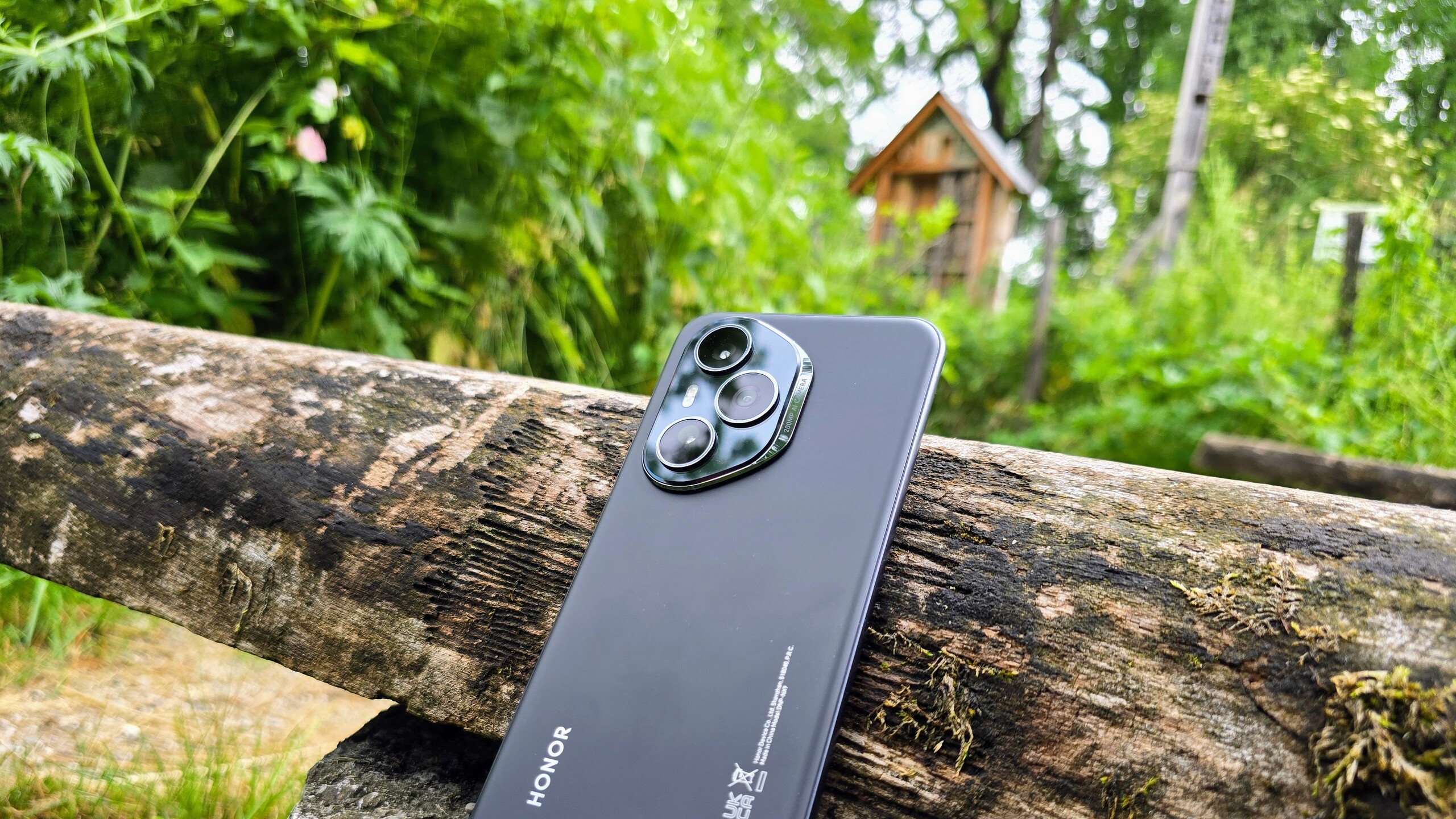
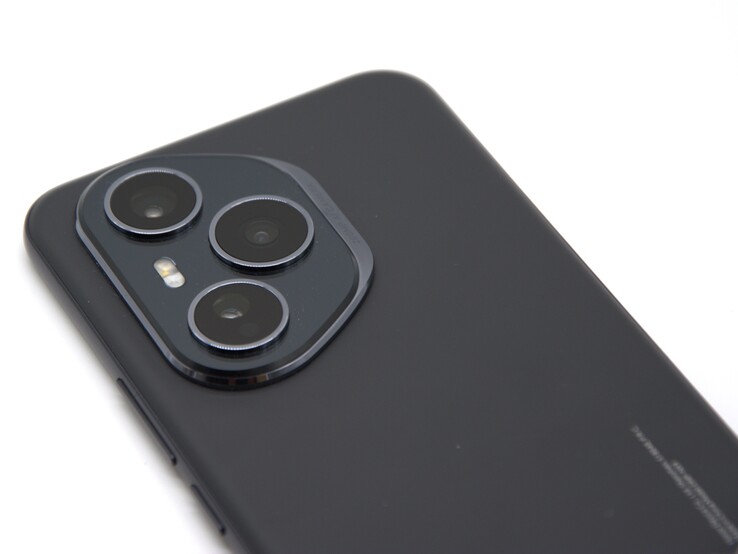








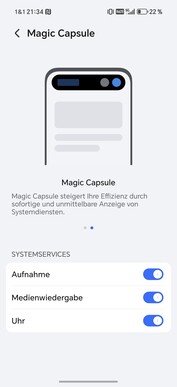
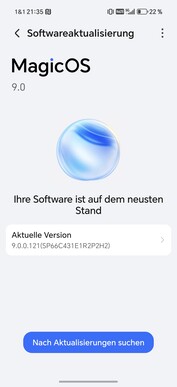
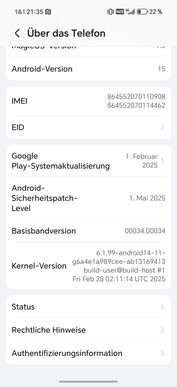
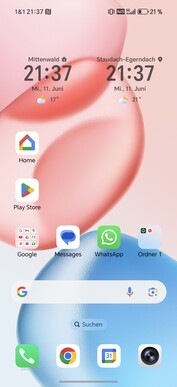

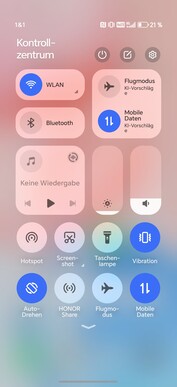

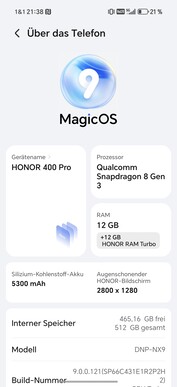
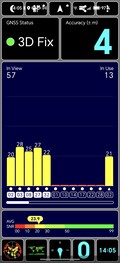
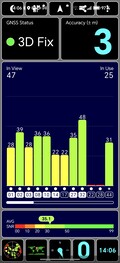


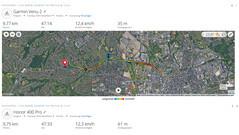


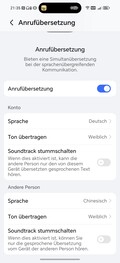



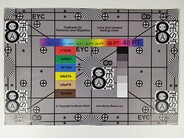






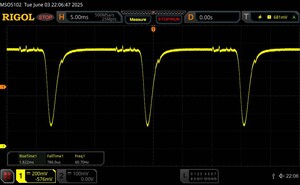








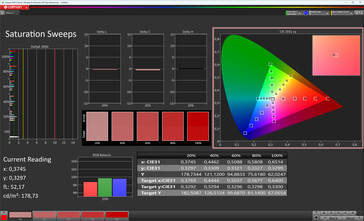
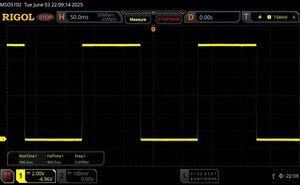
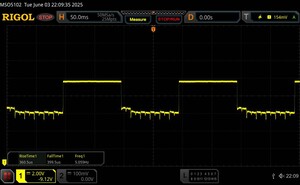
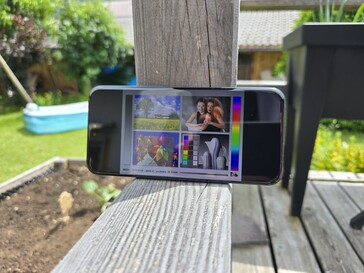



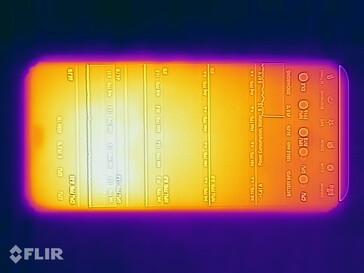
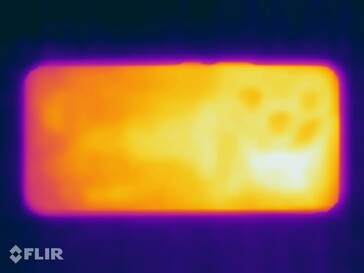
 Total Sustainability Score:
Total Sustainability Score: 



